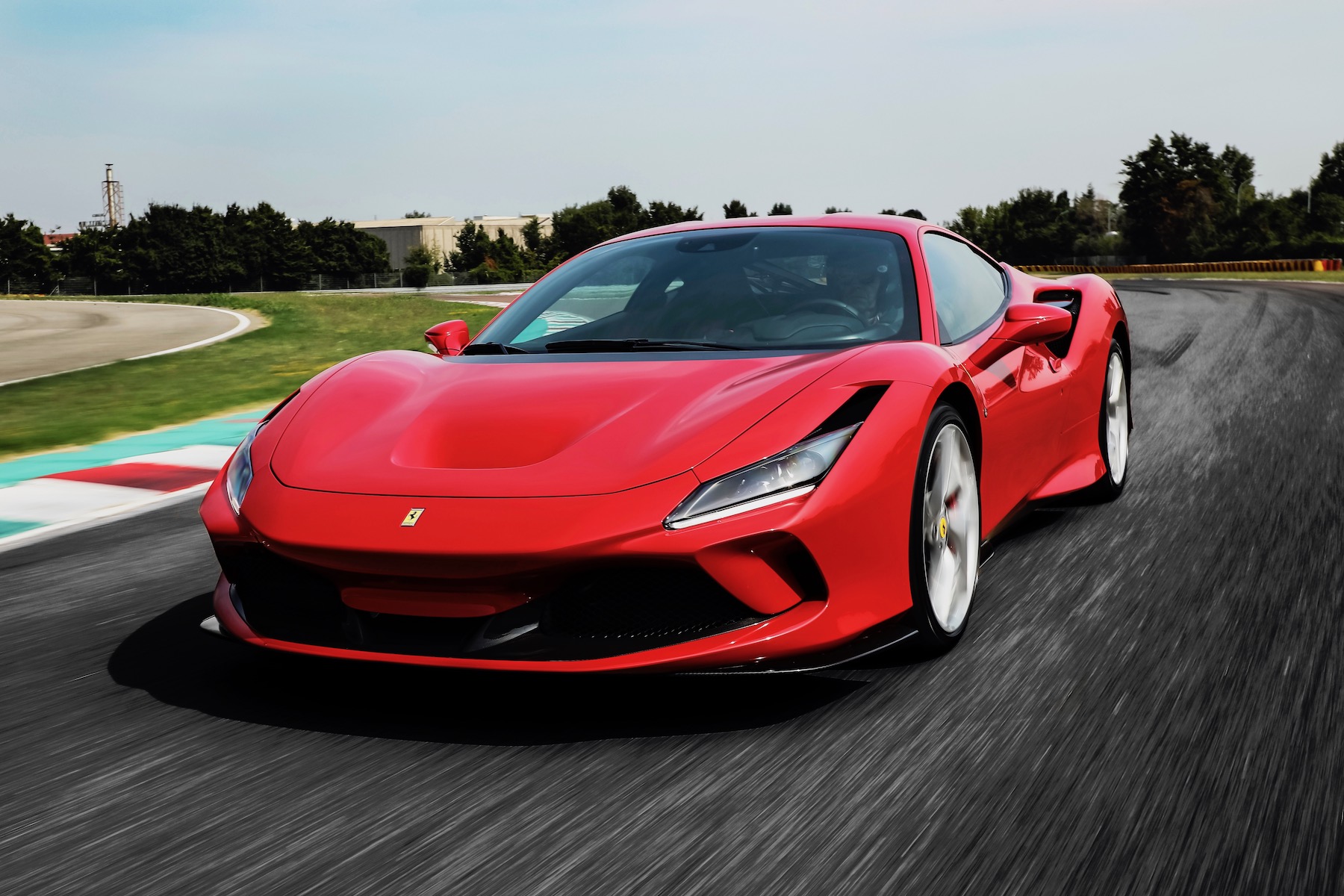
Ferrari rolled out the GTC4 Lusso T just a few days ago, packing a smaller engine and two fewer driven wheels than the range topping shooting brake. But it’s not the first turbocharged Prancing Horse. Not by a long shot.
The House That Enzo Built introduced its first turbocharged engine back in 1981 for Gilles Villeneuve and Didier Pironi to drive in the Formula 1 World Championship, winning two races before taking back-to-back titles, and in the three and a half decades since, it has developed a succession of turbo V8 road cars available to customers.
Following a 22-year gap in Ferrari’s turbo development, forced induction is now back in Maranello. And downsized though the engines may be, it’s back in a big way. Scroll on down for a brief history of Ferrari’s turbocharged V8 supercars.
208 GTB Turbo

Following the rollout of the 126CK with its turbocharged V6 the previous year, Ferrari extended its new forced-induction technology to the road with the introduction of the 208 GTB and GTS Turbo in 1982. The 208 was based on the 308 launched in 1975, which in turn replaced the six-cylinder Dino 246, and kicked off a string of mid-engined, eight-cylinder models that continues today with the 488. When local taxes heavily penalized cars with engines displacing more than two liters, Ferrari introduced the 208 version in 1980 with a downsized V8 that came in below the cap, but only produced 153 horsepower. With a single turbocharger, the factory increased output to 217, exceeding the cavallino-count of all previous versions save for the final Quattrovalvole version that debuted the same year.
When the 308 range was replaced by the updated 328 (pictured) at the end of ’85, a new GTB Turbo and targa-topped GTS Turbo were offered, employing the same engine to produce 251 hp, coming within spitting distance of the naturally aspirated 3.2-liter V8 and its 270 hp.
288 GTO

More impressive (and more fondly remembered) was the 288 GTO. Widely regarded as the first of Ferrari’s flagship supercars, the 288 was also based on the 308, but this time it applied two turbochargers (not just one) and to the larger 2.9-liter V8 engine. This time output rose to a massive 400 hp, helping the GTO sprint to 60 in five seconds flat. A later Evoluzione version was said to produce as much as 600 hp – unheard of at the time. Maranello developed and homologated the 288 to compete under the FIA’s Group B regulations, but the class was unfortunately eliminated before the GTO ever got to compete.
F40

As disappointed as they must have been in Maranello at the Group B’s demise, Ferrari used the 288 program as a starting point for what could be described as the most iconic of Ferrari supercars of all time: the legendary F40. It wore fresh bodywork fashioned from carbon, Kevlar, and aluminum, punctured by myriad NACA ducts and capped by that signature handlebar rear wing. But underneath was the same basic engine as the GTO, kicking out 471 hp – more than twice what the 208 GTB Turbo offered. Embraced by even the most ardent advocates of analog performance in a digital age, the twin-turbocharged F40 was ultimately succeeded by the naturally aspirated, twelve-cylinder F50.
California T

It would take 22 years for Ferrari to come out with another turbocharged model after the discontinuation of the F40 in 1992 until the launch of the California T in 2014, taking the very different form of a cabriolet with a folding hardtop. Replacing the California and its 4.3-liter atmospheric V8, the California T packed a slightly smaller unit displacing 3.9 liters, but still (like the F40) with eight cylinders and a pair of turbochargers. As a result, output increased significantly from 453 hp to 552 and even more impressively from 358 lb-ft of torque to 557. The six-speed manual option disappeared in the process, offering only the seven-speed dual-clutch gearbox that debuted on the California four years prior.
488 GTB

Evidently admiring its own work on the California T, Ferrari flipped the engine around and placed it in a revised version of the 458 Italia that it dubbed the 488 GTB. While it was at it, the engineers in Maranello also increased output to 661 hp and 561 lb-ft, eclipsing the California T and the F40 that was the last mid-engined turbocharged Ferrari before it. (With the arrival of the Spider version, the 488 became the first turbo Ferrari to offer multiple bodystyles since the GTB/GTS Turbo.) The result was a Fiorano lap time of 1:23 flat, making this the fastest eight-cylinder Ferrari ever to lap the company’s on-site test track, coming in behind only the twelve-cylinder F12 Berlinetta, F12 TDF and LaFerrari.
GTC4 Lusso T

Where the California T and 488 replaced (relatively) larger V8s with smaller turbocharged ones, the GTC4 Lusso T has stripped away far more. In its latest form, Maranello’s largest model does away with the top version’s innovative all-wheel drive system, drops four cylinders and gives up 2.4 liters of displacement – enough to power a small family car – and seeks to replace them with a pair of turbochargers. That same award-winning 3.9-liter V8 here produces 602 hp and 561 lb-ft of torque, splitting the difference between the versions found in the California T and 488, giving up just 79 hp compared to the twelve-cylinder GTC4 Lusso, but gaining 47 lb-ft of torque to compensate.
As a result, it’s said to lose just 0.1 seconds off the V12 model’s 0-60 time, which is as solid a case for downsizing and turbocharging as we’ve ever seen. Those more enamored of unadultered V12 power, though, will take solace in knowing that the F12 and its successors are slated to stick with twelve naturally aspirated cylinders for as long as Ferrari can hold on.



